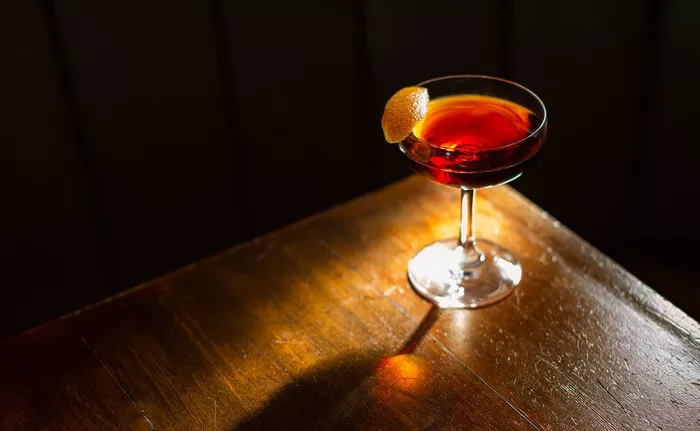In the realm of alcoholic libations, few beverages can claim the spotlight quite like cocktails and beers. These two drink categories have been cherished by countless individuals around the world for centuries, each boasting a unique allure and flavor profile. While both are enjoyed in various social settings, the distinctions between them are profound. In this article, we’ll embark on a flavorful journey to uncover the key differences between cocktails and beers, exploring their ingredients, preparation methods, flavors, and the cultural significance they hold.
Ingredients: The Foundation of Flavor
The most fundamental difference between cocktails and beers lies in their ingredients, and it’s here that we’ll begin our exploration.
Cocktails: These delightful concoctions are often crafted from a harmonious blend of spirits, liqueurs, and mixers. The spectrum of cocktail ingredients is incredibly diverse, encompassing everything from clear and aged spirits like vodka, gin, rum, and whiskey to an array of liqueurs and syrups. Fresh fruits, herbs, and spices also play a pivotal role in crafting the complex flavors that define cocktails.
Spirits: Spirits form the core of most cocktails. They bring a unique character and alcohol content to the mix. For instance, a Margarita relies on tequila, while a Mojito features rum.
Mixers and Liqueurs: Mixers like soda, tonic, and fruit juices, along with various liqueurs, are used to balance and enhance the flavors.
Beers: In stark contrast, beers are relatively uncomplicated in terms of ingredients. They are primarily composed of water, malted barley (or other grains), hops, and yeast. The interplay between these basic components results in a wide range of beer styles, each with its own flavor profile.
Malt and Hops: Malted barley provides the sugars needed for fermentation, while hops impart bitterness, flavor, and aroma.
Yeast: Yeast is responsible for fermentation, converting sugars into alcohol and carbon dioxide.
Preparation: Crafting the Perfect Pour
Beyond ingredients, the methods of preparation for cocktails and beers are vastly different, contributing to their distinctive characteristics.
Cocktails: Preparing a cocktail is akin to creating a work of art. It involves meticulous measurement, mixing techniques, and often, a flair for presentation. Bartenders are skilled craftsmen, employing techniques like shaking, stirring, muddling, and layering to create the perfect balance of flavors and aesthetics.
Shaking vs. Stirring: Some cocktails, like Martinis, are stirred to maintain clarity and a silky texture, while others, like Margaritas, are shaken for a frothy, icy finish.
Garnishes: Cocktails are often garnished with fruit slices, herbs, or creative additions like edible flowers.
Beers: Brewing beer is a time-honored tradition that involves several stages, including mashing, boiling, fermenting, and conditioning. While the process is complex, it doesn’t require the same level of finesse as cocktail making.
Brewing: The brewing process primarily involves mashing malted barley, boiling the wort with hops, fermenting, and conditioning. It’s a careful science.
Pouring: Beers are typically poured straight from the bottle or tap into a glass, with minimal fuss. Some specialty beers may be served in specific glassware designed to enhance their aroma and flavor.
Flavors: A World of Contrasts
The contrast between cocktails and beers extends to the flavors they offer.
Cocktails: With their intricate blend of ingredients, cocktails offer an explosion of flavors. From the sweet, citrusy notes of a Daiquiri to the smoky complexity of an Old Fashioned, cocktails cater to a wide range of taste preferences. They often feature a balance of sweet, sour, bitter, and savory elements.
Customization: Cocktails can be customized to suit individual tastes by adjusting ingredients or opting for variations like “on the rocks” or “up.”
Beers: Beers, on the other hand, derive their flavors primarily from the type of grains, hops, yeast, and brewing techniques used. They can range from crisp and refreshing lagers to dark and roasty stouts. Beer flavors are often described in terms of bitterness, maltiness, and hoppy or fruity characteristics.
Beer Styles: There is an extensive variety of beer styles, including lagers, ales, stouts, and more, each with its own distinct flavor profile.
Cultural Significance: Cheers to Tradition
Beyond taste, cocktails and beers hold unique cultural significance in various parts of the world.
Cocktails: Cocktails have a storied history, often associated with glamour and sophistication. They are a staple at upscale bars and cocktail parties, where expert mixologists showcase their craft. Cocktails have also played a role in popular culture, featured in movies and novels.
Cultural Icons: Classic cocktails like the Martini and Manhattan have become cultural icons, synonymous with elegance and style.
Beers: Beer has deep-rooted traditions in many cultures, often tied to social gatherings and celebrations. Beer is enjoyed in a wide range of settings, from casual pub nights to beer festivals. It’s often associated with relaxation and camaraderie.
Local Traditions: Different regions have their own beer traditions and styles, such as Oktoberfest in Germany or the craft beer boom in the United States.


